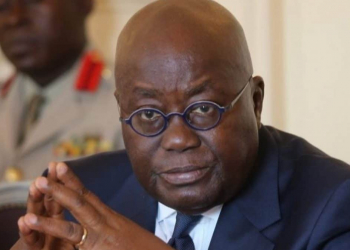Gold exports hit an all-time high at 3.84 million ounces last year although a moderation in prices ensured that earnings from the precious metal still dwarfed the historic US$5.6 billion recorded in 2012.
After averaging US$1,163.2 per ounce in 2015, gold prices improved to US$1,279.96 per ounce last year, partly helping earnings from the commodity to reach US$4.92 billion in 2016.
Although a marked improvement over the US$3.2 billion grossed from the commodity in 2015, last year’s earnings are still the fourth highest in the country’s gold export history, coming after the handsome amounts attained in 2011, 2012 and 2013.
Within those periods, total gold output moved from 3.1 million ounces in 2011 to 3.5 million ounces in 2013, according to data released by the Bank of Ghana (BoG) on May 9.
An analysis of the data showed that the behaviour of export figures from the mineral has always mirrored the direction of gold prices on the international market. This brings to the fore the vulnerability of the country’s foreign exchange basket, the local economy and the fortunes of domestic mines to the price trend.
An economist and Senior Researcher at the Institute for Fiscal Policy, Dr Boakye, said the outcome of the trend analysis underscored the need for the country to diversify its economy.
“Commodity exporters are always vulnerable to price shocks. There is no way you can get around it,” he said on May 12.
“That is why we have been saying all along that diversify but more importantly, try to produce industrial products for export. Those products usually do not have price shocks and they also fetch higher prices on value-added basis,” he explained.
In spite of mining gold in commercial quantities since the 14th century, Ghana was without a major gold refinery until 2005 when Asap Vasa Company Limited begun to refine raw gold.
The wholly Ghanaian-owned company refines raw gold into granules, coins and bars for the local and international market.
The debut of Asap Vasa in the gold refinery business was followed by two other refineries – the Sahara Royal Gold Refinery and the Gold Coast Refinery, which were commissioned in August 2015 and November 2016 respectively.
Although encouraging, the three refineries are still struggling to refine the annual output of small-scale miners, which constitute about 34 per cent of total output in 2015.
Price is golden
In spite of the swing in export numbers, Ghana has maintained its enviable position in the gold production league table; being the second in Africa and among the top 10 producers globally.
Over the last 10 years, export figures have risen from 2.52 million ounces in 2007 to 3.84 million ounces last year, representing a 149.8 per cent growth within the period.
While the growth in export figures mirrors the expansion in the mining business, the Vice President and Head of Stakeholder Relations at Gold Fields Ghana, Mr David Johnson, said it was also the result of prices of the metal.
With “price being everything,” Mr Johnson said miners would always tie their investments decision to prices in order to avoid the shocks that come with the fluctuations.
“Price impacts everything. At a certain price, you probably will be able to produce 1,000 ounces a year. At a different gold price, you can only produce 500 ounces a year.”
“The reason being that it will cost you a certain amount to produce an ounce of gold, depending on the location of the mine,” he said.
Impact on growth
The Chief Executive Officer of the Ghana Chamber of Mines, Mr Suleimanu Koney, said the importance of price to the mining industry explained why miners continued to manage their costs to be able to survive or risk getting out of business.
“For you to survive, what is within your control is what you manage and that is why, for instance, when the price comes down, companies will say they are doing restructuring,” he told the GRAPHIC BUSINESS on May 12.
Restructuring in the mining sub-sector is a recurring jargon that mostly surfaces after prices have tumbled amidst firming cost of production.
When prices fell from US$1,410.69 per ounce in 2013 to US$1,266.69 and US$1,163.2 in 2014 and 2015 respectively, mining companies in the country reacted with cost cutting measures that included contraction in production, leading to some layoffs.
That notwithstanding, the data did not show a positive correlation between the price and the contribution of the mining and quarry sub-sector to total economic output, measured by gross domestic product (GDP).
Although gold prices improved consistently from US$686.46 per ounce in 2007 to US$1,645.33 per ounce in 2012, data from the Ghana Statistical Service showed that growth of the mining and quarry sub-sector, of which gold production is key, declined consistently from 2.8 per cent in 2007 to 1.7 per cent in 2011 before improving to 2.05 per cent in 2012.
Join GhanaStar.com to receive daily email alerts of breaking news in Ghana. GhanaStar.com is your source for all Ghana News. Get the latest Ghana news, breaking news, sports, politics, entertainment and more about Ghana, Africa and beyond.


